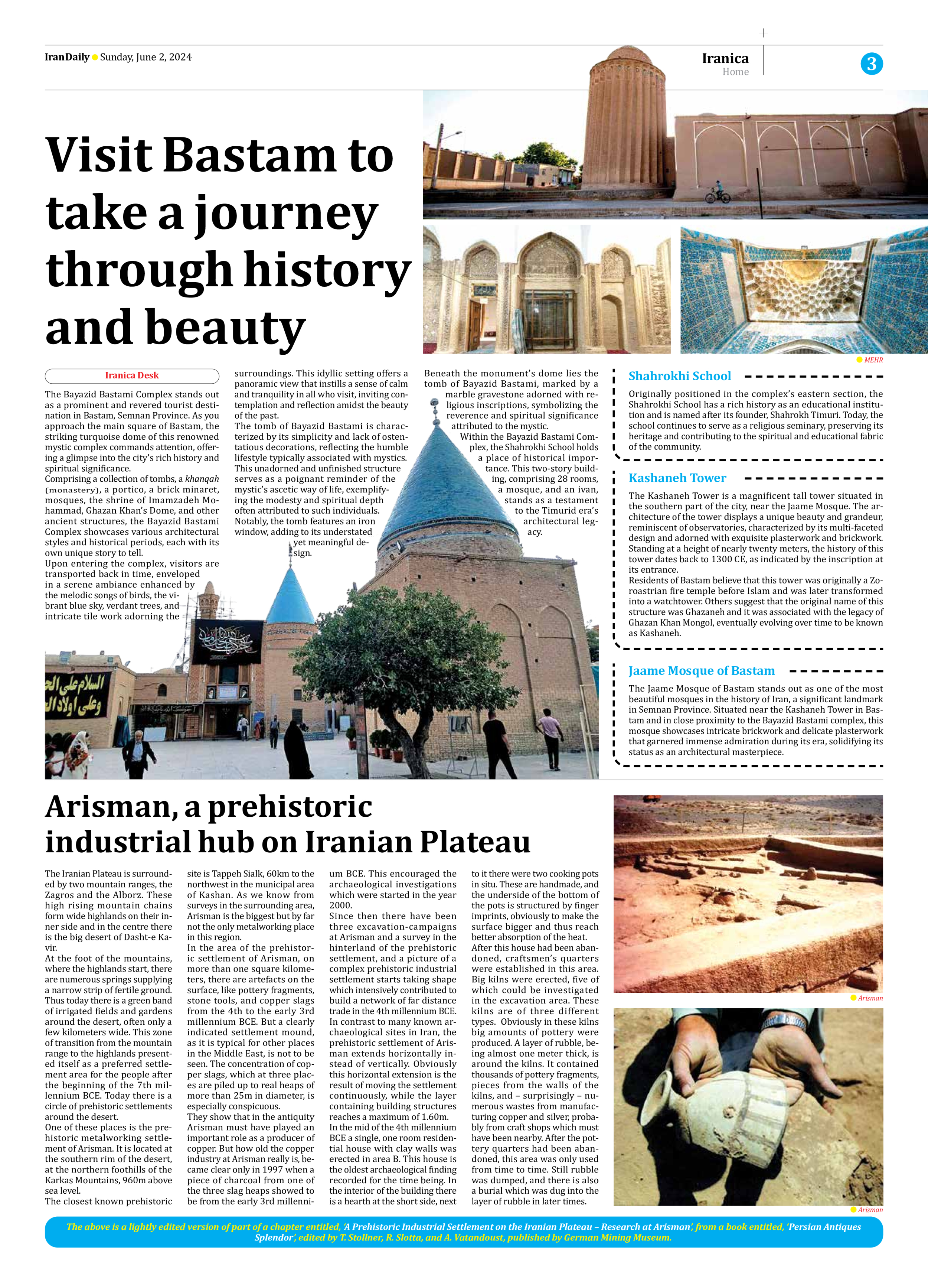
Arisman, a prehistoric industrial hub on Iranian Plateau
The Iranian Plateau is surrounded by two mountain ranges, the Zagros and the Alborz. These high rising mountain chains form wide highlands on their inner side and in the centre there is the big desert of Dasht-e Kavir.
At the foot of the mountains, where the highlands start, there are numerous springs supplying a narrow strip of fertile ground. Thus today there is a green band of irrigated fields and gardens around the desert, often only a few kilometers wide. This zone of transition from the mountain range to the highlands presented itself as a preferred settlement area for the people after the beginning of the 7th millennium BCE. Today there is a circle of prehistoric settlements around the desert.
One of these places is the prehistoric metalworking settlement of Arisman. It is located at the southern rim of the desert, at the northern foothills of the Karkas Mountains, 960m above sea level.
The closest known prehistoric site is Tappeh Sialk, 60km to the northwest in the municipal area of Kashan. As we know from surveys in the surrounding area, Arisman is the biggest but by far not the only metalworking place in this region.
In the area of the prehistoric settlement of Arisman, on more than one square kilometers, there are artefacts on the surface, like pottery fragments, stone tools, and copper slags from the 4th to the early 3rd millennium BCE. But a clearly indicated settlement mound, as it is typical for other places in the Middle East, is not to be seen. The concentration of copper slags, which at three places are piled up to real heaps of more than 25m in diameter, is especially conspicuous.
They show that in the antiquity Arisman must have played an important role as a producer of copper. But how old the copper industry at Arisman really is, became clear only in 1997 when a piece of charcoal from one of the three slag heaps showed to be from the early 3rd millennium BCE. This encouraged the archaeological investigations which were started in the year 2000.
Since then there have been three excavation-campaigns at Arisman and a survey in the hinterland of the prehistoric settlement, and a picture of a complex prehistoric industrial settlement starts taking shape which intensively contributed to build a network of far distance trade in the 4th millennium BCE.
In contrast to many known archaeological sites in Iran, the prehistoric settlement of Arisman extends horizontally instead of vertically. Obviously this horizontal extension is the result of moving the settlement continuously, while the layer containing building structures reaches a maximum of 1.60m.
In the mid of the 4th millennium BCE a single, one room residential house with clay walls was erected in area B. This house is the oldest archaeological finding recorded for the time being. In the interior of the building there is a hearth at the short side, next to it there were two cooking pots in situ. These are handmade, and the underside of the bottom of the pots is structured by finger imprints, obviously to make the surface bigger and thus reach better absorption of the heat.
After this house had been abandoned, craftsmen’s quarters were established in this area. Big kilns were erected, five of which could be investigated in the excavation area. These kilns are of three different types. Obviously in these kilns big amounts of pottery were produced. A layer of rubble, being almost one meter thick, is around the kilns. It contained thousands of pottery fragments, pieces from the walls of the kilns, and – surprisingly – numerous wastes from manufacturing copper and silver, probably from craft shops which must have been nearby. After the pottery quarters had been abandoned, this area was only used from time to time. Still rubble was dumped, and there is also a burial which was dug into the layer of rubble in later times.







